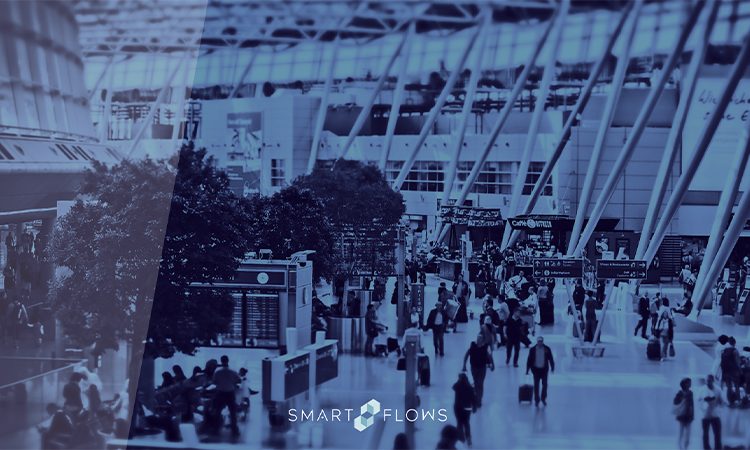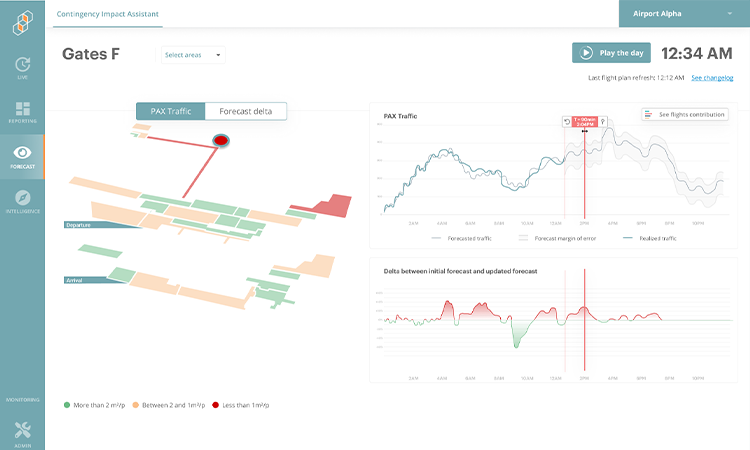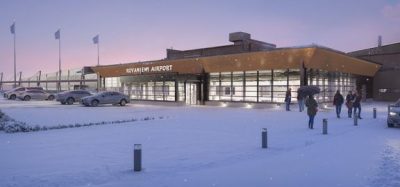How to make the most of the new PAX behaviour patterns in airports since the start of COVID-19
- Like
- Digg
- Del
- Tumblr
- VKontakte
- Buffer
- Love This
- Odnoklassniki
- Meneame
- Blogger
- Amazon
- Yahoo Mail
- Gmail
- AOL
- Newsvine
- HackerNews
- Evernote
- MySpace
- Mail.ru
- Viadeo
- Line
- Comments
- Yummly
- SMS
- Viber
- Telegram
- Subscribe
- Skype
- Facebook Messenger
- Kakao
- LiveJournal
- Yammer
- Edgar
- Fintel
- Mix
- Instapaper
- Copy Link
Posted: 12 November 2020 | Smart Flows | No comments yet
The intense environment that has existed since the start of COVID-19 has altered everyone’s usual habits and behaviours. But how has it changed the behaviours of passengers in airports? And how can airport management make the most of these altered behaviours?


COVID-19 has altered the way that people behave: They have to wear masks in most of the public areas and they are more afraid to spend time in public spaces. Yet, they still hear horrific news every day about how the virus continues to spread. The intense environment that has existed since the start of COVID-19 has altered everyone’s usual habits and behaviours. But how has it changed the behaviours of passengers in airports? And how can airport management make the most of these altered behaviours?
Smart Flows monitors passenger flow from entrance to exit in airports all over the world. The software supports airports in improving passenger experience and satisfaction while optimising resource allocation. Smart Flows clients have been eager to understand how passengers have been behaving since February 2020, and key patterns have been identified.
Passengers now arrive earlier at the airport
One key finding is that the pattern of passenger presentation has been altered. Arrival at airports, of course, is influenced by the airline or the destination. But, ever since the COVID-19 crisis has started, passengers have shown up at the airport earlier than they used to by 10 minutes, on average, with a variation from seven to 12 minutes, according to airports.
Not only do we generally observe longer stays in airports, but the main factor that increases the time spent in the airport is the flight destination, or, more specifically, the flight duration. The longer the flight, the earlier passengers show up at the airport. In European airports, passenger arrival at airports reaches 15 minutes for non-Schengen flights versus three to eight minutes only for Schengen destinations.
The reasons can only be exploratory, but airports report that passengers fear new control procedures or flight cancellations.
Planning the most accurate resource allocation
What is the opportunity behind knowing the show-up profiles for each flight? Knowing the current show-up profiles enables the most rational and accurate resource management: Comparing the flight planning, including the number of passengers expected on each flight with the flight show-up profiles, enables a refined forecast of passenger numbers that will present themselves at check-in, security, customs or boarding every 15 minutes on any given day.
The airport can then adapt the desk allocation at check-in, the staff allocation and line opening at security, or even the sandwich production in food areas, to the actual forecasted flows. No need to imagine the cost-saving that is attached to such an opportunity.
Not only can airports better plan the staff roaster every day, but the live monitoring of passenger flows all day long creates another opportunity. As passengers, of course, never behave as they “should” according to the planning and because planes can be late, or because their gate allocation can change, all day long, the reality is compared to the initial plan.
The opportunities and risks are shown in the below graph: A green zone means that passengers are not arriving as much as they should, hence that there are too many lines open at security, for example; when a red zone shows, more passengers than expected are arriving, hence there are not enough lines open. This information will help the team manager adapt their daily planning to reach the maximum reactivity facing the actual flows.


Smart Flows’ resource forecast feature
Passengers spend the extra-time at boarding
Where do passengers spend the extra minutes they have when they come to the airport? One would expect it is either spent in airport processes (it would then confirm the passenger fears) or in retail or restaurants. What Smart Flows observes is actually that the extra time is spent mostly by passengers waiting in the boarding areas.
This is a bit of a disappointment, because most of the time these are remote areas, where there are no or few retail outlets, meaning that there are limited opportunities to propose services to passengers. Smart Flows clients are currently designing new services to please the passengers waiting at boarding, such as specific Wi-Fi offerings and on-the-go food offers that come and meet passengers where they are seated.
In these hectic times, remaining blind on key information such as passenger show-up profiles for each flight prevents airports from being agile in adapting the forecast of their resources to the traffic rises and declines.
Smart Flows’ solution is a SaaS that leverages existing Wi-Fi infrastructure data; hence, it does not require any construction works in the airport. This presents two major opportunities:
- It limits the spread of the virus among airport staff as it requires very limited human work and almost no on-site work, as the majority of the work is being completed remotely
- It saves time, as data can be available within days of the activation of the software.
Please reach out to us at www.smart-flows.com for further details.
Related topics
Airport construction and design, Airport crisis management, Airport development, COVID-19, Information technology (IT), New technologies, Passenger experience and seamless travel, Terminal operations, Wi-Fi


















